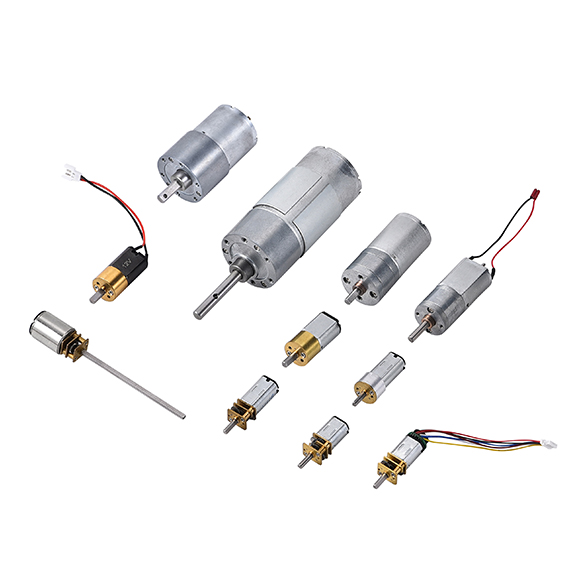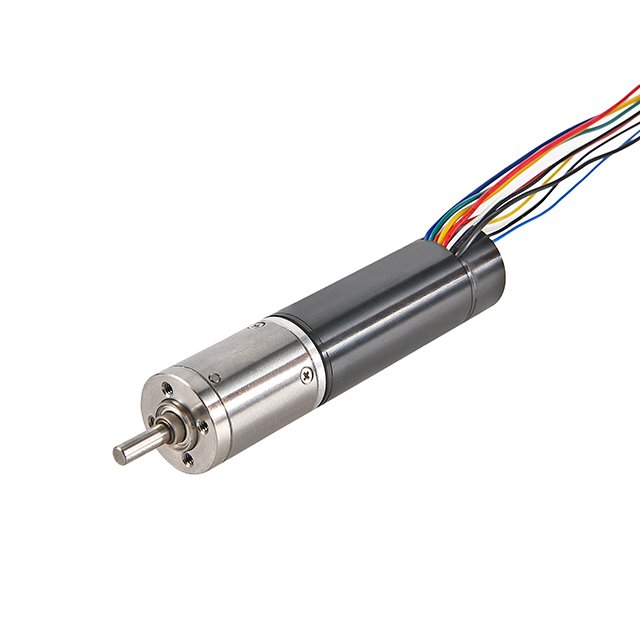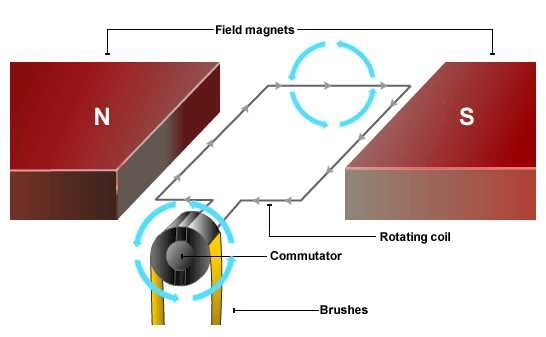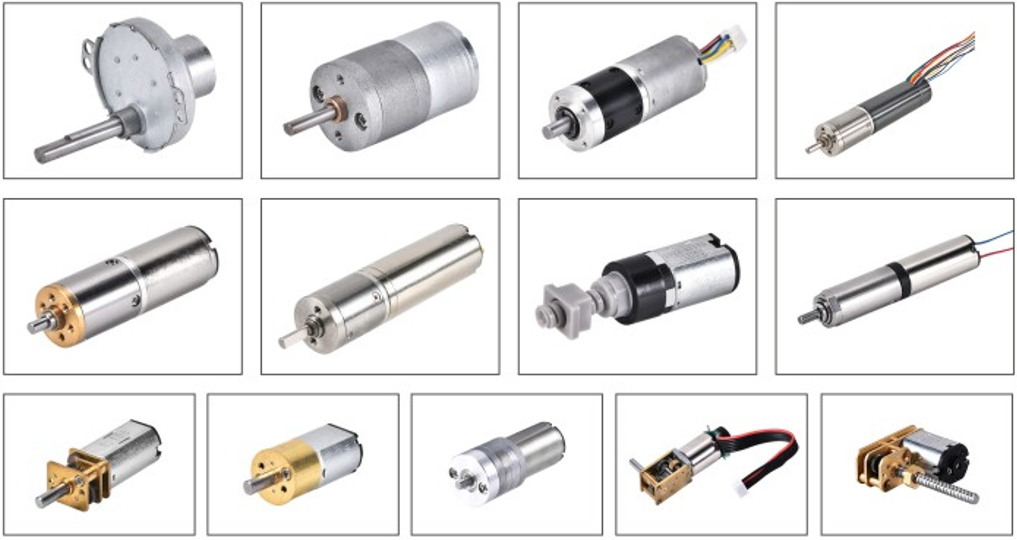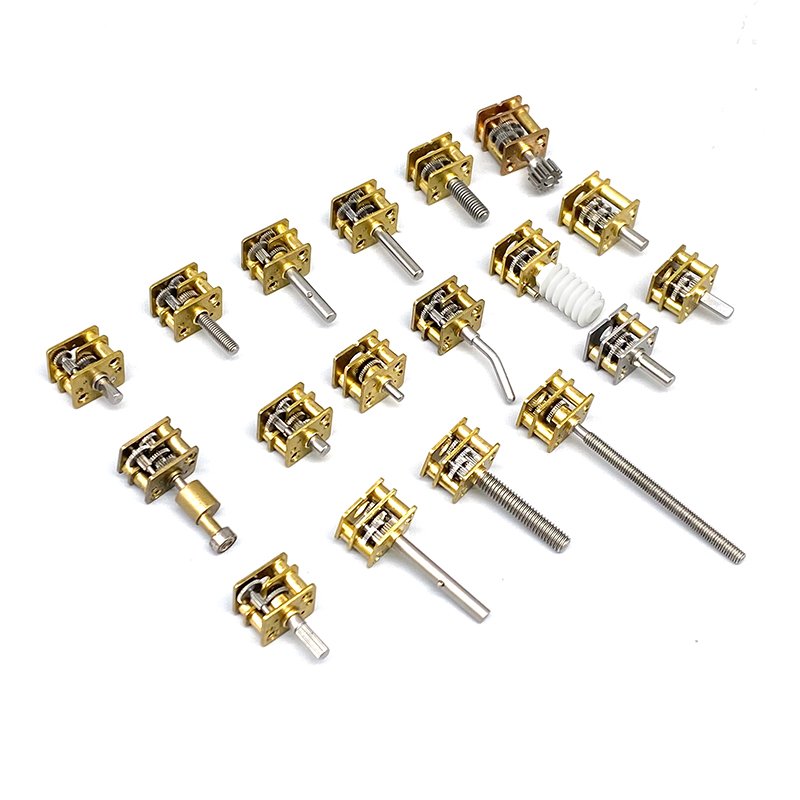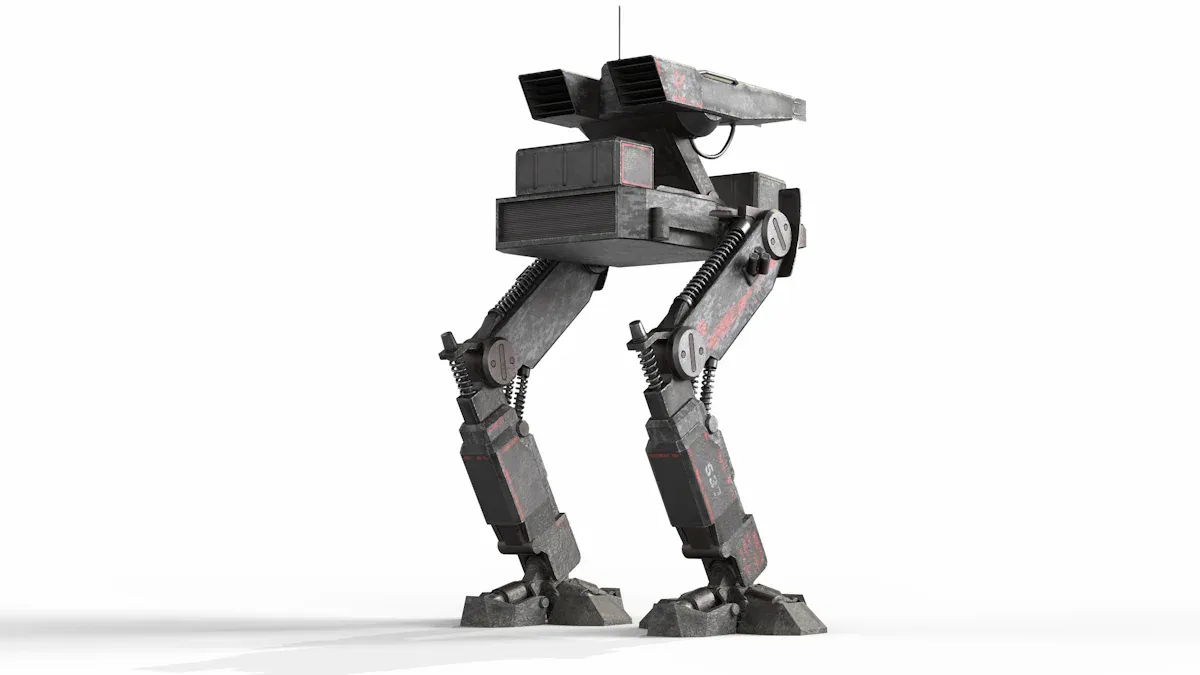A gearbox motor is a device that combines a motor and gearbox. This setup helps control torque and speed more accurately. It is very useful in many industries.
Here are some recent trends:
Factories use it more for automation and better efficiency.
Car makers use it in electric cars and smart factories.
Construction machines depend on it, especially in growing countries.
Asia Pacific is the top user, followed by North America and Europe.
By changing torque and speed, a gearbox motor improves how machines work. It is an important part of modern equipment.
Wichtigste Erkenntnisse
A gearbox motor combines a motor and gears to control speed and power. It is very useful in many industries.
Die Auswahl der right gearbox motor means knowing power needs, gear sizes, and work conditions. This helps it work its best.
Gearbox motors are small and strong. They save space and give good power, making them great for robots and home devices.
There are different types of gearbox motors, like spur, helical, and planetary. Each type works well for certain jobs, like factory machines or cars.
Taking care of gearbox motors is important. Check the oil and gears often to make them last longer and work well in tough jobs.
Fundamentals of Gearbox Motors
What is a Gearbox Motor?
A gearbox motor combines a motor and gearbox in one unit. This design helps control speed and torque better. The motor creates spinning energy, and the gearbox changes it. By adjusting gears, you can increase torque or lower speed. For example, more torque but less speed works well for heavy tasks.
Important features of a gearbox motor include torque, power, efficiency, and speed. These features decide how well it works in different jobs. The gear ratio, or how gears fit together, affects the output. A good gearbox motor provides smooth power and reliable use.
Main Parts of a Gearbox Motor
Knowing the parts of a gearbox motor helps you understand it. Below is a table showing the key parts and their jobs:
Part Name | Job Description |
|---|---|
Gears | Change speed and transfer power |
Gearbox Shaft | Moves torque between gears |
Lubricating Oil | Lowers friction and prevents damage |
Gearbox Housing | Protects parts and gives support |
Spacers | Keep parts aligned and reduce wear |
Lager | Help moving parts spin smoothly |
The motor has two main parts: the rotor and stator. The rotor spins to make energy, and the stator creates a magnetic field to move the rotor. The gearbox has gears of different sizes that adjust torque and speed. Oil and a strong housing keep the system working well and lasting longer.
How Does It Work?
A gearbox motor turns electrical energy into mechanical energy. Then, it adjusts this energy for specific tasks. When the motor runs, the rotor spins and creates energy. This energy goes through the gearbox, where gears change speed and torque. For example, fewer gears make it faster but with less torque, which is good for fans or belts.
How well a gearbox motor works depends on oil, gear material, and conditions. Studies show oil temperature affects performance. Warmer oil reduces friction and improves efficiency. Gear material also matters for strength and noise. Steel gears are strong and handle heat, making them great for tough jobs.
Standards like ANSI/AGMA 2001-D04 ensure gearbox motors are reliable. These rules help engineers design motors for different needs. By following them, companies make motors that work well and last long.
Types of Gearbox Motors
Stirnradgetriebemotoren
Spur gear motors are simple and very common. They use straight gears that spin next to each other. This setup helps move power between parts efficiently. These motors are often used in conveyor belts and packaging machines. Their basic design makes them reliable and easy to fix.
Why pick spur gear motors? They work well and save money. Their design reduces wasted energy, making them great for efficient tasks. But they can be noisy because the gears touch directly. Engineers use them where noise is not a big problem.
Helical Gear Motors
Helical gear motors have gears with slanted teeth. These teeth connect smoothly, making them quieter than spur gear motors. This design lowers shaking and boosts efficiency. Helical gear motors are great for heavy jobs like elevators and printing machines.
Why are they a good choice? The slanted teeth spread out the load, making them last longer. They can handle faster speeds and heavier tasks than spur gear motors. They cost more and are more complex, but they are worth it over time.
Planetengetriebemotoren
Planetary gear motors have a special design. A center “sun” gear is surrounded by smaller “planet” gears. These gears spin inside a ring gear, making a small but strong system. These motors are used in robots, medical tools, and airplanes.
Why are they so useful? They are small but give high power, perfect for precise work. They are also very efficient and share loads well. Even though they are more complicated, their flexibility makes them a top pick for advanced machines.
📊 Market Insights:
The global gearbox motor market was worth USD 27.3 billion in 2021. It is expected to grow to USD 39.12 billion by 2030, with a 4.60% yearly growth rate. Key reasons include renewable energy and automation in farming and food industries.
Schneckengetriebemotoren
Worm gear motors are special because they use a worm (a screw-shaped gear) and a worm wheel to move power. This setup allows for high torque while keeping the motor small. These motors work well in tight spaces where precise movement is needed.
Why pick worm gear motors? One big advantage is their self-locking ability. When the motor stops, the worm gear keeps the system from moving backward. This makes them great for lifting heavy objects or holding positions without extra brakes. You’ll see them in elevators, conveyor belts, and gates.
Another benefit is how quietly they run. The sliding action between the worm und worm wheel makes less noise than other motors. This makes them perfect for quiet places like hospitals or homes.
But worm gear motors have downsides too. They create more heat from friction, which lowers efficiency. To fix this, manufacturers use better lubricants and materials. If you need a small, strong motor for slow, powerful tasks, a worm gear motor is a good choice.
💡 Tipp: Check the gear ratio and load needs before choosing a worm gear motor. This helps avoid overloading and ensures it works well for your task.
Worm gear motors often pair with a DC gear motor for precise speed control. This combo improves performance and flexibility, making it popular in many industries.
Advantages of Gearbox Motors
Efficiency and Torque Benefits
Gearbox motors give strong force at slow speeds. This is great for jobs needing a lot of power. The gear ratio increases the motor’s torque. For example, the formula Torque Output = Motor Torque × Gear Ratio shows how a small motor with a high gear ratio can create big torque. This makes gearbox motors better than direct drive systems for things like conveyor belts or heavy machines.
These motors are also very efficient, with up to 96% energy use. This means less energy is wasted, saving money on power costs. They can handle heavy tasks without losing performance, showing how reliable they are. Whether for factory machines or precise tools, their mix of torque and efficiency makes them a smart pick.
Compact Design Features
Gearbox motors are small and save space. They combine the motor and gearbox into one unit. This design is lighter and shorter than older motors. For example, a brushless DC motor is 62% smaller and lighter than an AC induction motor. This makes them perfect for tight spaces.
Even though they are small, they still give strong power and torque. Their light weight makes them easy to set up and fix. This adds to their usefulness. Whether for a robot arm or a home gadget, their compact size fits well in many designs.
Motor Typ | Length Comparison | Weight Comparison |
|---|---|---|
Bürstenloser DC-Motor | 62% shorter | 62% lighter |
AC Induction Motor (90mm) | Reference size | Reference weight |
Versatility Across Applications
Gearbox motors work in many industries. They can change speed and torque for different tasks. For example, a DC gear motor powers small robots, while a worm gear motor lifts heavy loads in elevators. Different gear types, like spur, helical, and planetary, make them useful for many jobs.
These motors last a long time, often over 25,000 hours. They work well even in tough conditions. Whether for factory automation or home devices, their flexibility makes them a great choice. They provide steady power for many uses, making them important in modern engineering.
Applications of Gearbox Motors
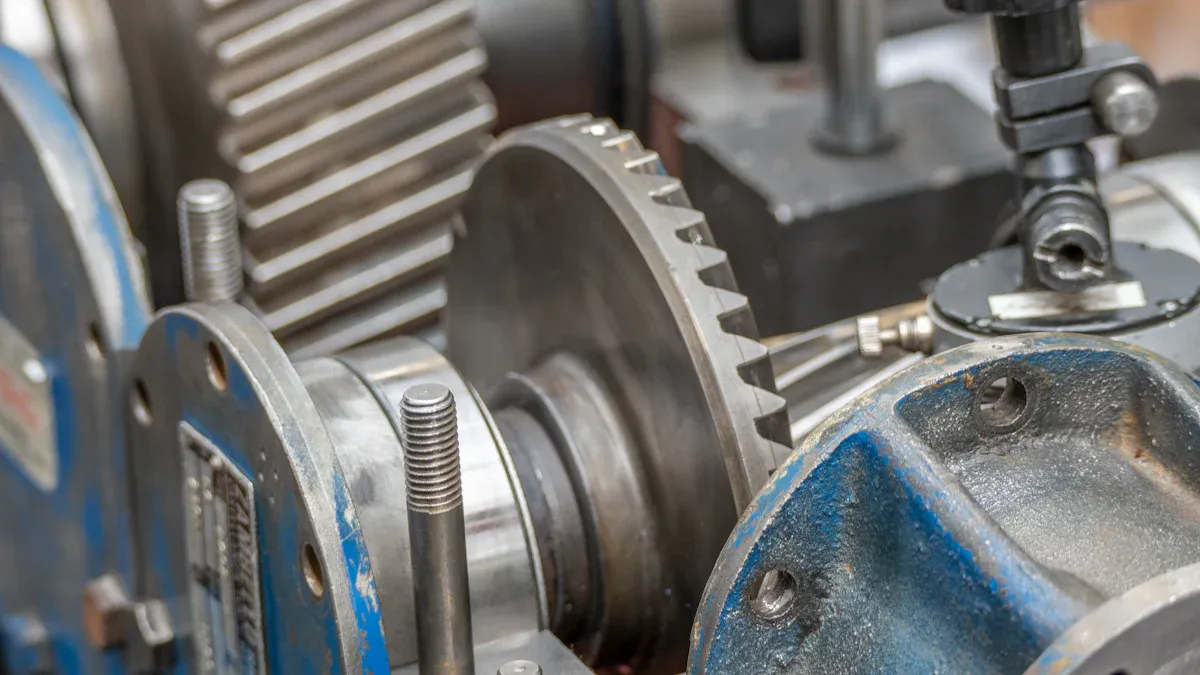
Industrial Machinery Uses
Gearbox motors are important for industrial machines. They are used in conveyors, mixers, and packaging tools. These motors change torque and speed to handle tough jobs. For example, a conveyor motor keeps goods moving smoothly at the same speed. This helps factories work faster and avoid delays.
Farmers use gearbox motors in tractors and harvesters to save time. These motors make farming 25% more efficient. Construction machines like cranes and excavators work 20% faster with these motors. Mining tools also depend on them to work well in harsh places. They help machines last longer and stay reliable.
Industrie | Efficiency Boost | Example Use |
|---|---|---|
Farming | 25% better performance | Tractors and harvesters |
Building | 20% faster operations | Cranes and excavators |
Mining | Longer machine life | Harsh environment tools |
Automotive Systems Integration
Gearbox motors are key in cars for control and precision. Electric cars use them to manage speed and torque better. This makes driving smoother and saves energy. These motors also make electric cars quieter, improving comfort for drivers.
They are also found in power windows, seats, and wipers. These jobs need small motors that work well. By adjusting torque, they keep these parts running smoothly. Car makers use them to make vehicles more useful and enjoyable for users.
Robotics and Automation Applications
Robots and automation systems rely on gearbox motors. Robotic arms, drones, and factory machines use them for precise movement. For example, a robotic arm with a planetary gear motor moves accurately and smoothly.
Automation systems use these motors for repeated tasks. In factories, they power belts and welding robots to boost productivity. Their small size and strong torque make them perfect for tight spaces. Whether in medical robots or factory machines, these motors are reliable and accurate.
Consumer Appliances Functionality
Gearbox motors are key parts of many home appliances. They help these devices work well by changing speed and torque. Without them, many appliances would not work as smoothly.
One big benefit is their precise control. For example, in washing machines, they adjust the drum’s speed. This helps clean clothes well without harming the fabric. In blenders and food processors, they let you pick different speeds. This makes it easy to chop, blend, or puree foods.
Another plus is their small size. Gearbox motors are tiny but strong, perfect for appliances like fans, vacuums, and coffee makers. Their size helps create compact designs that save space but still work great.
💡 Did You Know?
Gearbox motors are quiet, making modern appliances less noisy. This is great for homes where quietness is important.
These motors are also very durable. They can handle long use, which is needed for things like refrigerators and air conditioners. These appliances run for hours, and the motor keeps them working reliably.
In short, gearbox motors make appliances better, stronger, and longer-lasting. Next time you use your blender or washing machine, remember the gearbox motor making it all possible.
Choosing the Right Gearbox Motor
Key Factors to Think About
Das Richtige auswählen gearbox motor needs careful thought. Each factor helps the motor work well for your task. Here are the main things to consider:
Torque and Load Needs: Know how much torque your task needs. If the motor has too little torque, it will struggle. Too much torque can waste energy and cause damage. Use this formula to find the right torque:
Output Torque = Motor Torque × Gear Ratio.
This makes sure the motor can handle the job without problems.Übersetzungsverhältnis: The gear ratio changes speed and torque. A high gear ratio gives more torque but less speed. This is good for heavy jobs. A low gear ratio gives more speed but less torque, great for fans or belts. Match the gear ratio to your task for the best results.
Workplace Conditions: Think about where the motor will be used. Hot, wet, or rough places need strong motors. Some motors, like fractional horsepower ones, are made for tough conditions. These motors last longer and work better in hard environments.
Space Limits: Small designs are important for tight spaces. Planetary gear motors are small but powerful. They are great for robots or medical tools where space is tight.
Specific Task Needs: Different tasks need different motors. For example:
Spur gear motors are simple and quiet.
Helical gear motors handle heavy jobs well.
Worm gear motors lock in place, perfect for lifting.
Picking the right motor type helps it work best for your task.
Helpful Tools and Tips: Use tools like formulas and guides to choose wisely. Videos and examples can show how motors work in real life. These resources help you make better choices.
By thinking about these points, you can pick a motor that works well and lasts long.
Common Mistakes to Avoid
Even with planning, mistakes can happen when picking a motor. Avoid these errors to save time and money:
Skipping Torque Needs: Some people forget to check torque. Without enough torque, the motor may fail or not work well.
Wrong Gear Ratio: Picking the wrong gear ratio can cause problems. It might slow things down or not give enough torque. Always check the ratio matches your needs.
Ignoring Conditions: Using a regular motor in tough places can cause it to break. Motors not made for heat or moisture won’t last in harsh spots.
Choosing Cheap Over Quality: Cheap motors might not last or work well. Spending more on a good motor saves money in the long run.
Not Thinking About Space: Big motors can be hard to fit in small areas. Smaller options, like planetary gear motors, are better for tight spaces.
Skipping Helpful Resources: Many people don’t use guides or tools. These can help you pick the right motor. Ignoring them can lead to bad choices.
By avoiding these mistakes, you can pick a motor that works well and fits your needs.
Gearbox motors are important for changing torque and speed. They are used in many industries because they work well and last long. For example, a good gearbox can work for over 24 years. Systems like NORD’s LogiDrive are made for Industry 4.0. These systems save energy and work precisely in warehouses and logistics.
The growing market shows how useful they are. For instance, planetary gearmotors may grow from USD 3.5 billion in 2023 to USD 6.2 billion by 2032. Standards like ISO 14179 and AGMA make sure they are high quality and reliable.
Think about using gearbox motors for your projects. They are great for machines, robots, and even home devices. These motors are flexible and work very well.
FAQ
Why are gearbox motors better than direct drive systems?
Gearbox motors give more force at slower speeds. This makes them great for heavy jobs. Direct drive systems don’t have this strength. Gearbox motors also control speed and power better. This helps machines work faster and use less energy.
Why do gearbox motors last longer in tough environments?
Gearbox motors are made with strong materials like steel. They have oil to reduce rubbing, which stops damage. These features help them work well in heat, wet places, or with heavy loads. They stay reliable even in hard conditions.
Why is gear ratio important in gearbox motors?
The gear ratio changes how speed and force are balanced. A high ratio gives more force but less speed. A low ratio does the opposite. Picking the right ratio helps the motor do its job well.
Why are planetary gear motors popular in robotics?
Planetengetriebemotoren are small but very strong. Their design spreads out the work evenly. This gives them high force and accuracy. They are perfect for robots and drones where space is tight and precision is needed.
Why should you consider maintenance for gearbox motors?
Taking care of gearbox motors keeps them working well. Check the oil and look at the gears often. This stops problems before they happen. Without care, the motor might overheat or break, costing more to fix.
